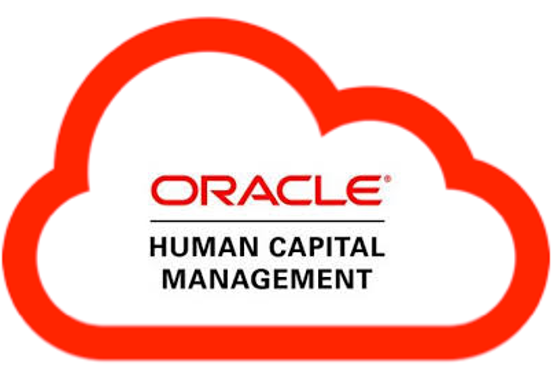In today’s dynamic business environment, organizations need robust performance management systems to enhance productivity, foster employee development, and drive business success. As we step into 2025, the landscape of performance management continues to evolve, incorporating advanced technologies and innovative approaches. This blog delves into the top 9 performance management systems that can elevate your workforce and help you stay ahead in this competitive market.
HR Tutorial - Performance Management System
Section 1: Criteria for Choosing Performance Management Systems
Selecting the right performance management system is a critical decision that can significantly impact your organization's efficiency, employee engagement, and overall success. Here’s a detailed breakdown of the key criteria to consider when choosing a performance management system:
1. Ease of Use
User-Friendly Interface: The system should have an intuitive and user-friendly interface that both managers and employees can navigate effortlessly. This ensures high adoption rates and reduces the need for extensive training.
Accessibility: It should be easily accessible across various devices, including desktops, tablets, and smartphones, allowing users to interact with the system anytime and anywhere. In cases where collaboration tools are integrated, built-in monitoring can help detect and resolve Microsoft Teams issues promptly, ensuring smooth communication and minimal disruption to workflows.
2. Customization
Tailored to Your Needs: The system should offer customization options to adapt to the unique processes and workflows of your organization. This includes customizable performance review templates, goal-setting frameworks, and feedback forms.
Scalable Solutions: As your business grows, the system should be able to scale accordingly, allowing you to add new features or modules without significant disruptions.
3. Integration
Seamless Integration: The performance management system must integrate seamlessly with other HR systems and tools such as payroll, HRIS (Human Resource Information Systems), and learning management systems (LMS). This integration ensures a smooth flow of data across platforms and reduces administrative burdens. Time Tracking Integration: Additionally, the system should support time-tracking software functionalities, like those offered by My Hours, to ensure accurate recording of hours and enhanced productivity insights.
APIs and Third-Party Applications: Look for systems that offer robust APIs and support third-party integrations, enabling you to connect with existing business tools and enhance functionality.
4. Scalability
Growth Accommodation: The system should support your organization's growth, accommodating an increasing number of users and expanding functionalities as needed. This ensures long-term viability and prevents the need for frequent system changes.
Modular Approach: A modular system allows you to add or remove features based on your current needs, providing flexibility and cost-effectiveness.
5. Analytics and Reporting
Advanced Analytics: The system should offer advanced analytics capabilities to track and measure performance metrics. This includes visual dashboards, trend analysis, and predictive analytics to inform strategic decisions.
Custom Reports: The ability to generate custom reports tailored to specific needs is crucial. This helps in analyzing performance data, identifying patterns, and making data-driven decisions.
6. Feedback Mechanisms
Continuous Feedback: A good performance management system facilitates continuous feedback between managers and employees. This includes features like real-time feedback, 360-degree reviews, and anonymous feedback options.
Goal Alignment: The system should support the alignment of individual goals with organizational objectives, ensuring that everyone works towards the same targets and performance standards.
7. Mobile Accessibility
Remote Access: With the rise of remote work, mobile accessibility has become a vital feature. The system should offer mobile applications or responsive web interfaces that allow employees and managers to access performance management tools on the go.
Push Notifications: Mobile accessibility should include push notifications to remind users of important tasks, upcoming reviews, or feedback requests.
8. Security
Data Protection: Ensure the system complies with industry standards for data security and privacy. This includes encryption, secure login protocols, and regular security audits to protect sensitive employee information.
Compliance: The system should adhere to relevant regulations and standards such as GDPR (General Data Protection Regulation), CCPA (California Consumer Privacy Act), HIPAA compliance, and other regional data protection laws.
9. Cost
Cost-Effectiveness: Evaluate the cost of the system in relation to the features and benefits it offers. Consider both the initial implementation cost and ongoing subscription or maintenance fees.
ROI Analysis: Conduct a return on investment (ROI) analysis to understand the potential financial benefits of the system. This includes improved productivity, reduced turnover, and enhanced employee engagement.
10. Vendor Support and Reputation
Customer Support: Choose a software that offers robust customer support, including training resources, technical support, and user communities. This ensures you have the necessary assistance during and after implementation.
Reputation: Research the vendor’s reputation by reading reviews, testimonials, and case studies. A vendor with a strong track record of success and customer satisfaction is more likely to provide reliable and effective solutions.
11. Implementation and Training
Smooth Implementation: Consider the ease and speed of implementation. A good vendor should provide a clear implementation plan, including timelines, milestones, and resources required.
Comprehensive Training: The system should come with comprehensive training materials and programs to ensure all users are well-versed in its functionalities.
12. Flexibility in Performance Reviews
Various Review Types: The system should support different types of performance reviews such as annual reviews, quarterly check-ins, project-based reviews, and peer reviews.
Customizable Review Processes: The ability to customize the review process to fit different roles, departments, and business units is essential for addressing diverse performance evaluation needs.
By carefully evaluating these criteria, you can select a performance management system that not only meets your current requirements but also adapts to future needs, ultimately driving better performance and achieving organizational goals.

Section 2: Top 9 Performance Management Systems for 2025
Here are the top 9 performance management systems to consider in 2025:
1. BambooHR

- Features: Employee self-assessment, performance tracking, goal setting, customizable reports.
- Pros: User-friendly, robust reporting, seamless integration with HR tools.
- Cons: Limited customization for large enterprises.
2. Workday

- Features: Continuous performance management, real-time feedback, goal alignment, career development planning.
- Pros: Comprehensive features, strong analytics, scalability.
- Cons: Higher cost, complexity in implementation.
3. SAP SuccessFactors

- Features: Goal management, performance reviews, 360-degree feedback, succession planning.
- Pros: Extensive customization, strong integration capabilities.
- Cons: Steep learning curve, high implementation cost.
4. ADP Workforce Now

- Features: Performance reviews, goal setting, talent development, real-time analytics.
- Pros: Easy to use, excellent customer support, comprehensive HR suite.
- Cons: Limited advanced features, can be costly for small businesses.
5. Lattice

- Features: Continuous feedback, goal tracking, performance reviews, employee engagement surveys.
- Pros: User-friendly interface, strong feedback mechanisms, good analytics.
- Cons: Limited integration options, may not suit very large organizations.
6. 15Five

- Features: Weekly check-ins, 1-on-1 meetings, OKR goal setting, performance reviews.
- Pros: Focus on employee engagement, easy to implement, good for small to mid-sized businesses.
- Cons: Limited customization, basic reporting features.
7. UKG

- Features: Performance appraisals, goal setting, succession planning, talent acquisition.
- Pros: Integrated HR solution, strong analytics, mobile-friendly.
- Cons: Can be complex to set up, higher cost.
8. Oracle HCM Cloud

- Features: Comprehensive performance management, goal alignment, talent review, continuous feedback.
- Pros: Highly customizable, robust analytics, strong integration with other Oracle products.
- Cons: High cost, complex implementation.
9. Zoho People

- Features: Goal setting, performance reviews, 360-degree feedback, employee self-assessment.
- Pros: Affordable, easy to use, good integration options.
- Cons: Limited advanced features, may not suit large enterprises.
10. factoHR
- Features: Goal alignment, real-time performance tracking, customizable review templates, 360-degree feedback system, mobile app accessibility.
- Pros: Affordable for businesses of all sizes, seamless integration with payroll and HR tools, user-friendly mobile application, detailed performance analytics.
- Cons: Limited advanced customization for niche industries.
Section 3: Comparative Analysis
Here is a comparative analysis of the top 9 performance management systems based on key criteria:
| System | Ease of Use | Customization | Integration | Scalability | Analytics | Feedback | Mobile | Security | Cost |
|---|---|---|---|---|---|---|---|---|---|
| BambooHR | High | Medium | High | Medium | High | Medium | High | High | Medium |
| Workday | Medium | High | High | High | High | High | High | High | High |
| SAP SuccessFactors | Medium | High | High | High | High | Medium | High | High | High |
| ADP Workforce Now | High | Medium | High | Medium | Medium | Medium | High | High | Medium |
| Lattice | High | Medium | Medium | Medium | High | High | Medium | High | Medium |
| 15Five | High | Medium | Medium | Medium | Medium | High | Medium | High | Medium |
| Kronos Workforce | Medium | Medium | High | High | High | Medium | High | High | High |
| Oracle HCM Cloud | Medium | High | High | High | High | Medium | High | High | High |
| Zoho People | High | Medium | Medium | Medium | Medium | Medium | Medium | High | Medium |
Section 4: Future Trends in Performance Management Systems
1. AI and Machine Learning
Predictive Analytics: AI and machine learning are transforming performance management by providing predictive analytics. These technologies analyze data to predict trends, identify high-potential employees, and suggest interventions, allowing organizations to address issues proactively.
Personalized Recommendations: AI offers personalized learning and development recommendations based on individual performance data, helping employees improve their skills and advance their careers.
Automated Tasks: Machine learning algorithms automate routine tasks such as scheduling performance reviews, sending reminders, and compiling data, freeing up HR professionals to focus on strategic activities.
2. Continuous Performance Management
Real-Time Feedback: Continuous performance management is replacing annual reviews. Real-time feedback systems enable ongoing communication between managers and employees, fostering a culture of continuous improvement and development.
Frequent Check-Ins: Regular check-ins help address issues promptly, align goals, and keep employees engaged and motivated, promoting agility and responsiveness in performance management.
Development Focus: This approach emphasizes employee development over mere evaluation, fostering a more engaged and skilled workforce.
3. Employee Well-Being
Holistic Management: Future systems will integrate metrics related to employee well-being, mental health, and work-life balance, recognizing that well-being is crucial for performance and productivity.
Well-Being Programs: Performance management systems will include features supporting well-being programs, such as stress management resources, mental health support, and tailored workout routines. Incorporating activities like fitness trampoline exercises can also be a unique addition, which promotes physical fitness while helping to reduce stress and improve overall mood.
Burnout Prevention: Monitoring well-being indicators helps identify signs of burnout early, prompting interventions to support affected employees.
4. Remote Work Support
Virtual Reviews: With the rise of remote work, systems are incorporating features for virtual performance reviews and feedback sessions, ensuring remote employees receive equal attention and development.
Remote Collaboration: Integration with tools like Slack, Microsoft 365 backup, and Zoom ensures seamless communication and collaboration, maintaining performance management processes despite physical distance with team time off calendar.
Performance Tracking: Enhanced tracking of remote employee performance, including productivity metrics and project progress, ensures alignment with organizational goals.
5. Customization and Personalization
Tailored Plans: Future systems will offer advanced customization, allowing organizations to tailor performance plans and review processes to individual roles and departments.
Personalized Development: Performance management systems will create personalized development paths based on employee strengths, weaknesses, and career aspirations, fostering engagement and motivation.
Flexible Goal Setting: Systems will support flexible goal-setting frameworks that adapt to changing business priorities and individual career goals, ensuring alignment and relevance.
6. Integration with Other Tools
Unified Ecosystems: Performance management systems will increasingly integrate with other HR and business tools, creating a unified ecosystem for a holistic view of employee data and enhancing decision-making.
Data Synchronization: Seamless data synchronization with other platforms, such as learning management systems and payroll, streamlines HR processes and reduces administrative burdens.
APIs and Open Standards: Using APIs and open standards will facilitate easier integration and data sharing, ensuring efficient and comprehensive performance management.
ServiceNow implementation: With ServiceNow implementation solutions, organizations can improve employee productivity, ensure compliance, and gain actionable insights to drive workforce success
7. Data Security and Privacy
Enhanced Protection: Future systems will prioritize data protection measures, including robust encryption and secure access controls, to safeguard sensitive employee information.
Regulation Compliance: Systems will ensure compliance with data privacy regulations such as GDPR and CCPA, reducing legal risks and providing peace of mind.
Transparency: Greater transparency in data collection and processing ensures employees are informed and provide consent for using their performance data.
8. Gamification
Engagement: Gamification features like badges, leaderboards, and milestones will enhance employee engagement and motivation, making performance management processes more interactive.
Recognition: Gamification can be used to provided rewards and recognition for top performers, fostering a culture of appreciation and healthy competition.
Skill Development: Incorporating gamified learning modules and challenges encourages continuous skill development and knowledge sharing.
9. Diversity, Equity, and Inclusion (DEI)
Bias-Free Evaluations: Future systems will incorporate features to ensure bias-free performance evaluations, promoting fairness and equity.
DEI Metrics: Tracking DEI metrics provides insights into diversity and inclusion efforts, helping organizations identify areas for improvement.
Inclusive Programs: Performance management systems will support the creation of inclusive development programs that cater to diverse employee needs and backgrounds, fostering a more equitable workplace.
10. Enhanced User Experience
Intuitive Interfaces: Future systems will prioritize user experiences with intuitive interfaces, personalized dashboards, and easy-to-navigate features.
Voice and Chatbot Integration: Integration with voice assistants and chatbots provides quick access to tools and information, improving efficiency and accessibility.
User Feedback: Incorporating user feedback ensures systems remain relevant and effective, continuously adapting to evolving needs.
By embracing these trends, organizations can leverage advanced performance management systems to drive engagement, enhance productivity, and achieve strategic goals in an ever-changing business landscape.
Conclusion
Selecting the right performance management system is vital for enhancing workforce productivity and achieving business goals. The top 9 systems highlighted in this article offer a range of features to suit different organizational needs. By considering the criteria for choosing a system and staying abreast of future trends, you can make an informed decision that will elevate your workforce and drive success in 2025 and beyond.
FAQs
1. What are the top 9 performance management systems to consider?
1. BambooHR * 2. Workday * 3. SAP SuccessFactors * 4. ADP Workforce * 5. Lattice F * 6. 15Five * 7. Kronos Workforce Ready * 8. Oracle HCM Cloud * 9. Zoho People * 10. factoHR
2. What are the key features to look for in a performance management system?
Key features include ease of use, customization, integration with other HR tools, such as employee record management software, advanced analytics and reporting, and continuous feedback mechanisms.
3. How do performance management systems support remote work?
They offer virtual performance reviews, integrate with remote collaboration tools like Slack and Zoom, and provide enhanced tracking of remote employee performance and productivity.
4. Why is continuous performance management important?
Continuous performance management promotes real-time feedback, regular check-ins, and a focus on employee development, leading to higher engagement, agility, and better alignment with organizational goals.
